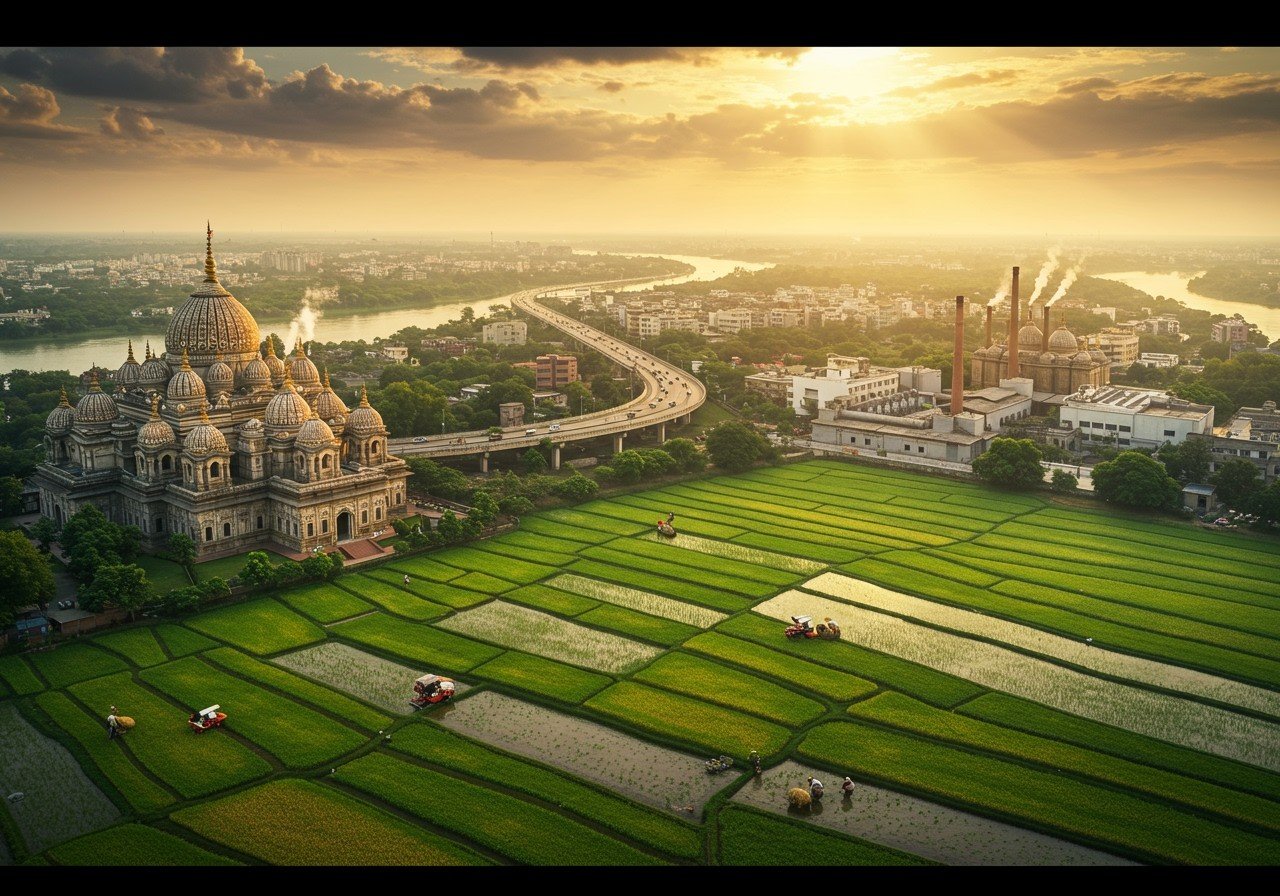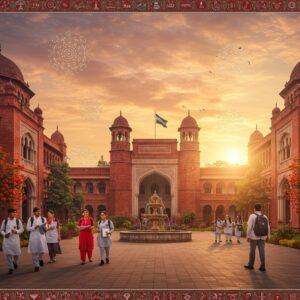
Nestled in the heart of West Bengal, Bardhaman (also known as Burdwan) boasts a rich history and a dynamic economy. This blog delves into Bardhaman’s economic landscape, exploring the interplay of traditional sectors like agriculture with modern industrial advancements. We’ll examine the job market, wholesale trade, and the crucial role of rice mills in the region’s prosperity.
Historical and Cultural Significance
Bardhaman’s vibrant past has profoundly shaped its present economy. A prominent city during the Mughal era and British rule, its historical landmarks, such as the 108 Shiva Temples and the Rajbari complex, reflect its rich cultural heritage. Understanding this historical context provides valuable insights into Bardhaman’s economic evolution.
Agriculture and the Importance of Rice Mills
Agriculture forms the backbone of Bardhaman’s economy, with rice cultivation at its core. The region’s numerous rice mills play a pivotal role in both the local and state economies. These mills are essential for:
- Producing diverse varieties of rice, catering to various consumer preferences and market demands.
- Employing specific milling processes, ensuring quality control and efficient production, contributing to local employment and regional food security.
- Creating employment opportunities, supporting livelihoods and contributing to the overall economic stability of the region, thereby reducing unemployment and boosting local incomes.
While key rice mills contribute significantly, the industry faces challenges, including the need for modernization and increasing competition. This highlights the importance of ongoing investment and innovation in this crucial sector. For high-quality puja items essential to rice harvesting ceremonies and celebrations, visit poojn.in.
Industrial Growth and Development
Beyond its agricultural foundation, Bardhaman is experiencing steady industrial growth. The city houses a range of small to medium-sized industries, including textile manufacturing and chemical plants. These industries benefit from established industrial parks, impacting local employment positively. Government initiatives further support this industrial development, stimulating the local economy and attracting investment.
Bardhaman’s Diverse Job Market
Bardhaman’s job market offers diverse opportunities across agriculture, industry, and the service sector. Key employment sectors include:
- Education, with numerous institutions providing employment for teachers, administrators, and support staff.
- Healthcare, offering jobs for doctors, nurses, technicians, and other medical professionals. This reflects the growing demand for healthcare services in the region.
Local educational institutions play a crucial role in preparing the workforce for these diverse job opportunities. However, job seekers face challenges such as skill gaps and limited opportunities in specific areas. Initiatives to bridge these gaps are vital for sustained economic growth. Explore a wide range of spiritual products to enhance your career and well-being at poojn.in.
Wholesale Markets and Trade
Bardhaman’s wholesale markets are vibrant economic hubs, facilitating trade in agricultural products, textiles, and various other goods. Major wholesale markets like Bardhaman Mandi are integral to the regional supply chain. Robust transportation and logistics infrastructure ensure efficient trade operations. Enhance your business ventures with auspicious products from poojn.in.
Infrastructure Development
Infrastructure development is paramount for Bardhaman’s continued economic growth. Recent advancements in transportation include:
- Improved road connectivity, facilitating smoother transportation of goods and people, reducing travel time and costs.
- Enhanced rail connectivity, connecting Bardhaman to major cities and markets, further boosting trade and commerce.
The Grand Trunk Road and the Eastern Railway are vital arteries for trade and connectivity. Urban infrastructure projects focus on improving water supply and sanitation, enhancing the quality of life for residents. Continued government policies and investments aim to further strengthen Bardhaman’s infrastructure.
Socio-Economic Development and the Tribal Population
Bardhaman has witnessed significant urbanization and industrial growth, particularly in Asansol and Durgapur, known for steel, iron, and coal production. The socio-economic conditions of the tribal population are also a key focus, with many engaged in occupations like masonry, carpentry, construction labor, and vending. Understanding and addressing the specific needs of this community is crucial for inclusive economic development. Support local artisans and their craftsmanship by purchasing authentic products from poojn.in.
Conclusion
Bardhaman’s economy stands as a testament to the successful integration of tradition and modernity. Agriculture, industry, and trade all play crucial roles in its continued growth. The city’s rich history adds depth to its present economic landscape. While rice mills and agriculture remain fundamental, industrial expansion and thriving wholesale markets propel Bardhaman towards a prosperous future. Ongoing infrastructure development, coupled with a focus on addressing socio-economic challenges, ensures a bright future for Bardhaman’s residents, businesses, and the local economy. Celebrate Bardhaman’s rich culture and traditions with authentic puja items from poojn.in.


